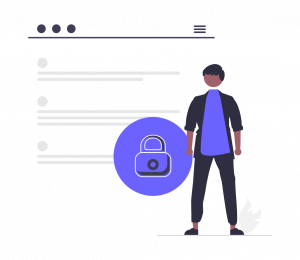Lock in Your Interest Rates
Step 5 in refinancing

Locking in Your Interest Rate: What Does It Mean?
When you’re refinancing your home, one of the key elements you’ll deal with is the interest rate—the percentage of the loan that you pay to the lender in exchange for borrowing the money. The interest rate directly affects your monthly payment, the total interest you’ll pay over the life of the loan, and how much you ultimately repay overall.
Locking in your interest rate means that once you’ve applied for a refinance loan, you can “freeze” the interest rate for a specific period, even if market rates go up or down before you close on the loan.
Why Is Locking in Important?
Interest rates fluctuate daily, sometimes even multiple times a day, based on market conditions (such as changes in the economy or Federal Reserve policy). If you’re pre-approved for a refinance and are ready to move forward, you might want to lock in your rate to avoid any potential increase in rates before closing.
Without locking in, your loan might be subject to market fluctuations, which could lead to a higher rate by the time the refinance is finalized. If rates go up, it could raise your monthly payment and make the refinance less beneficial, so locking in helps provide certainty.
How Do You Lock in Your Interest Rate?
Initial Rate Offer: After you apply for the refinance and get pre-approved, the lender typically gives you an initial rate offer. If you are happy with the offer, you can ask to lock in that rate.
Lock Period: The rate lock is typically for a specific period—usually 30, 45, or 60 days, depending on the lender. This gives you a window of time to complete the refinance process and close on the loan.
Rate Lock Agreement: The lender will provide an agreement that details the terms of the rate lock. It will specify the interest rate you’re getting, how long the lock lasts, and if there are any fees or conditions attached to the lock. Some locks are free, while others may cost a small fee.
Commitment to Close: Once you lock in the rate, you commit to completing the refinance within that time period. If for some reason you don’t close within the lock period, the lender may re-assess your rate, which could result in a new rate (usually higher).
Types of Rate Locks:
Floating Rate: If you choose not to lock in a rate right away, your rate is “floating.” This means that it could change from day to day based on market fluctuations. You may decide to wait and see if rates go down, but if they rise, you could end up with a higher rate.
Lock with Float-Down Option: Some lenders offer a “float-down” option, which allows you to lock in a rate but also gives you the flexibility to reduce your rate if it drops during the lock period. This can be helpful in volatile market conditions.
Extended Rate Lock: If you’re worried that it may take longer than usual to complete your refinance (for example, if you’re waiting for paperwork or dealing with complicated circumstances), you can sometimes opt for an extended rate lock. This could last for up to 90 days or more, but keep in mind that this option may come with additional fees.
Pros and Cons of Locking in Your Interest Rate
Pros:
Protection from Rising Rates: Locking in a rate helps you avoid the risk of higher rates, which could lead to a higher monthly mortgage payment.
Certainty: You’ll know exactly what your monthly payment will be, which can be helpful for budgeting and planning your finances.
Security: It helps remove uncertainty from the refinancing process, especially in a volatile market.
Cons:
No Benefit from Falling Rates: If interest rates drop after you’ve locked in, you won’t be able to take advantage of lower rates. You’d be stuck with the locked rate.
Rate Lock Fees: Some lenders charge a fee to lock in a rate, especially if you’re opting for a longer lock period.
Limited Time Window: If you’re unable to close on the loan during the lock period, you may have to renegotiate the rate or get a new rate entirely, which could be higher.
When to Lock in Your Interest Rate?
It’s important to lock in your interest rate when you feel confident that you’re ready to close the refinance, but also at a time when you’ve researched and know you’re getting a competitive rate.
Here are a few scenarios:
If Rates Are Low: If you’ve been watching the market and notice that rates are lower than they’ve been for a while, it’s a good time to lock in.
If Rates Are Expected to Rise: If economic indicators suggest rates will increase in the near future, locking in can help you lock in a good rate before the rise happens.
If You Need Certainty: If you don’t want to deal with the uncertainty of fluctuating rates, locking in can help you feel more secure.
Final Thoughts on Locking in Your Rate
Locking in your interest rate during a refinance is an important decision that depends on market conditions, your financial goals, and the timing of your loan closing. It gives you the certainty that your rate will not increase, but it also means you won’t benefit if rates decrease. You’ll want to carefully weigh whether the current market conditions align with locking in a rate that works for your long-term financial goals.
Each lender and loan may have different conditions around rate locks, so be sure to discuss with your lender and get everything in writing before you make a final decision.